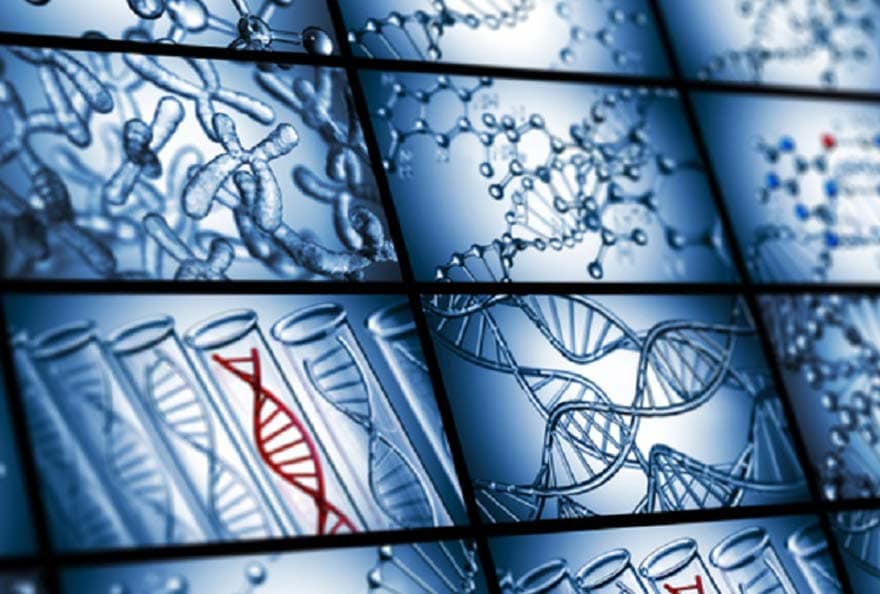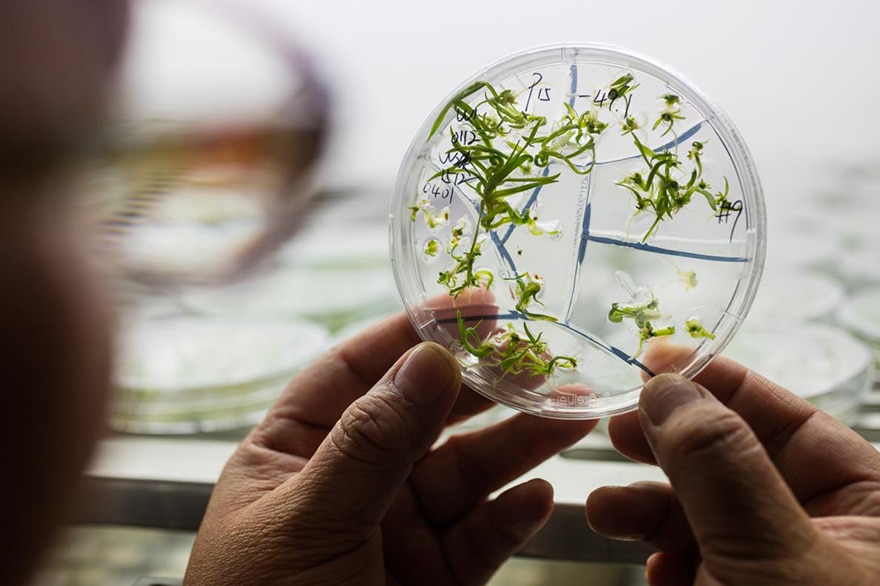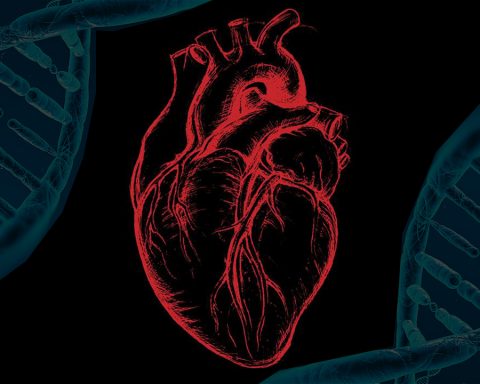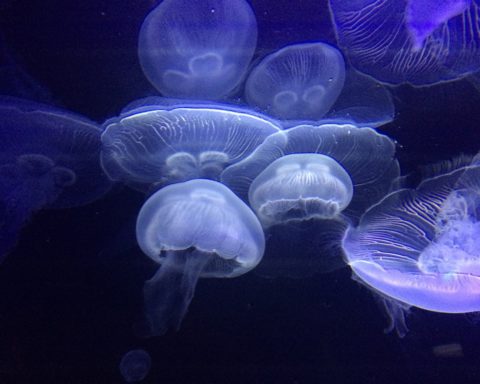"Making sense of life" in its imperfect translation, "Explaining life", the book by Evelyn Fox Keller. [1]We are interested in this in several ways. For the rare personality of its author first of all, who in the specialized world of great academics, has been able to look to the edges of his field, and beyond, towards the humanities. For his contribution to feminism, from the beginning of the 1980s, in his way of making the masculine mark of scientific discourse appear, through the impregnation of terminology, a precursor of those on the question of gender and a prefiguration of the advances of "science and cultural studies".
Finally, we are even more particularly interested in her epistemological postures, in the two essential themes that she tackles and which make up the bulk of this article: attempts to explain life and the elaboration around the notion of explanation.
Evelyn Fox Keller [2] began his career with physicists who, it is often said.., "seek to extend the limits of knowledge until there is nothing left unexplained, at least nothing left in the physical universe." (p.11 of his book). Then she was confronted by the audience of biology and medicine, who told her "that arguments based on mathematics are far from being able to provide an answer to the question: what place does purely deductive reasoning reserve for the surprises that nature might have to offer, for mechanisms that would be totally different from those we had imagined in our initial hypotheses"?
"What is life?"
The question is a recent one, it did not arise until the eighteenth century. For the Encyclopedia, life is presented as the opposite of death. The first quest on this subject appears when in his taxonomy Jean-Baptiste Lamarck [3] pits the living against the inorganic, not the dead. It is from this conceptual leap that he is considered the father of biology (p.317).
So Fox Keller questions: "Wouldn't it be better to consider, as Foucault said, that the limit between the living and the non-living is the product of a human history that is more than evolutionary? »…« It simply means that the question: what is life, is a historical question that can only be answered within the framework of categories to which, as human actors, we choose to remain faithful ... and not in logical, scientific or technical terms" (p.320). She infers: "It is in this sense that life is a human, rather than a natural, category. So is the explanation.
The reminder of an experimental curiosity
"Explaining Life" consists of three parts, each describing a historical stage in the discourse of developmental biology. To each one corresponded types of attempts to explain development, and conceptions of explanation. What she elaborates by means of the first example in the first part, which concerns the period before 1953, is particularly representative of her work. It deals with attempts at explanation by physical, chemical and mathematical "models". We have focused in particular on her presentation of Stéphane Leduc's "synthetic biology", based on the experiments he attempted in France between 1905 and 1928, aiming at the "synthesis of artificial organisms on the cellular level", organisms created "thanks to the osmotic properties of chemical precipitates" (pp.36-37).
Stéphane Leduc [4]A physicist and professor at the Nantes School of Medicine, who had already built an international reputation as far away as the United States for his previous research, was convinced [5] that "the chain of beings cannot be broken anywhere ..., [that it was] certainly a continuous chain, from the mineral to the most perfected being ... the theory of evolution must admit the physico-chemical nature of life and spontaneous generations (p.53)"... " The theory of evolution] cannot, must not, let the chain be broken between the living world and the mineral world...the chain is continuous, the passage is gradual, there can be, there is no continuity" (p. 54). [6]... Leduc, in his work of demonstrative experimentation, was therefore looking for the "missing link" between inert and living matter, thereby attempting to prove that it is possible to create intermediary organisms between inert and living matter.
Leduc had thus succeeded in creating "developing forms" in a specially designed environment where osmosis took place. [7]and argued that "it was in the forces of osmotic pressure that he discovered the fundamental physical basis for all the most essential properties of life. He placed minerals in bins by certain processes and product combinations in an osmotic medium, a "coarse mass of raw material" which after some time could be observed "producing a bud, a stem, a root...without even the presence of organic matter.... [8] ». According to him, Leduc's osmotic growths had "all the properties attributed to living beings: growth, reproduction, assimilation, elimination" (p.39). His detractors were ruthless in their criticism of this researcher, who was accused of somehow "feigning" life. His creations were fragile, unstable. In any case, they were not alive. The ambiguity of their status, "the resistance they put up to any definitive location" in the realm of the living or non-living placed a limit on the scope of the experiment, as did the uncertainty attached to it (noted by Loeb, p.24), "on the epistemological proximity between the origins of individual life and the origins of life on Earth".
Contextualization
So, why reconvene Stéphane Leduc, with his outdated experiments? From other points of view, such as that of Gradenwitz, the value of this work was undeniable, precisely because it contributed to "the discovery of intermediate stages between inert matter and living beings. » (p.41).
Fox Keller develops in this spirit how, if this work was abandoned... [9]...they were nonetheless interrogatories. Leduc's claim was impregnated with his desire to have the theses of his "master", Jean-Baptiste Lamarck, too quickly ousted, according to him, by Darwin, recognized. The background to this work was the polemics between "vitalism" and "mechanism", as well as on "spontaneous generation", in the hypothesis of its link with the theory of evolution.
Fox Keller proceeds according to the same method of analysis with the work of Arcy Thompson's Briton, contemporary of Leduc, in the second example of this first part. A researcher concerned with "forms" that, according to him, appear according to physical patterns, he is considered a precursor of "mathematical biology". Similarly, it reviews the work of Alan Turing in his research to invent a machine combining mechanics and chemistry, an imaginary machine to model the formation of the embryo, envisaged as a "state function", through a chain of successive state calculations.
Making a similar effort to distance themselves from "vitalism", these three authors shared the concern to bring together biology on the one hand, and chemistry and physics (Leduc), physics and mathematics (d'Arcy Thompson) and mathematics (Turing) on the other, in a dream, one might say, of "the greatest possible osmosis" in the figurative sense, between these disciplines. Fox Keller shows that this work has had the advantage of "filling a conceptual void caused...by a lack of information" (p.17) on development, and of providing experimental elements.
The epistemological culture, from "need" to "politics"...
Fox Keller also points out the importance of the climate in which the work is received, including the social and even media ingredients attached to it. Thus, for example, she contrasts the recriminatory tone of Leduc, wounded for his master Lamarck, which earned him the hostility of the salons, with the charm of d'Arcy Thompson's literary culture, a charm to which she assigns a role in the reception given to his research.
It claims (p.329) to be part of the so-called "historical epistemology" current. [10]. Because if in the 1990s, for some people... [11]Fox Keller, on the other hand, opts for "determining the epistemological hypotheses of these cultures..." and brings "epistemological culture" closer to "style of reasoning". [12] or "styles of scientific thinking" [13]. It states that "one must consider the explanatory conventions that are operational at given times and in given areas of scientific research".
But, more profoundly, it affirms a theoretical link between scientific reflection envisaged in the spatio-temporal context of research, insists on the notion of "need" (p.15) and, she writes further on: "... I claim that the temporal, disciplinary and cultural specificity of needs is at the origin of the specificity of what I call an epistemological culture" (p.15). It links to the notion of need that of "explanatory satisfaction" to which it gives a place.
"Need" and "explanatory satisfaction", these two factors immediately inscribe the actors and their environment in the question and in the quest for resolution, which leads Evelyn Fox Keller to affirm the following: "the description of a phenomenon has the value of explanation if, and only if, it responds to the needs of an individual or a community" (p.15). And explanatory satisfaction" is analogous to narrative satisfaction: the explanations that satisfy our need to understand, the stories we like to hear are those that meet expectations... These expectations are formed from a reservoir of experiences that are not only technical and scientific, but also social and political. » (p.119).
Thus, the epistemological approach is relative to fields and moments, it is inscribed according to certain needs in a given field and historicity. Comparing Leduc's work with modern attempts at artificial life, Fox Keller questions "the types of cognitive satisfaction that these two synthetic biology companies have to offer" at different times. Each hypothesis would come to sediment as a stratum in the history of a scientific field, and as such, even if no longer in use, it continues to have explanatory value, as in a phylogenesis in the discipline.
It renews in its own way the reflection on the doxa as a body of knowledge, and representations or opinions linked to a community concerned, which guide research, questioning, the relationship to knowledge, and its historical inscription: another form of its historicity. Knowledge can no longer be considered as impassable when the very nature of knowledge is to be refutable. It can be extrapolated that in Fox Keller's case, if the characteristic of scientific explanation is to be perishable, this is particularly due to its very historicity. In different ways, this would be similar to the notion of Popperian refuttability, in that it gives the processes of knowledge and epistemological hypotheses a status of expiry.
The explanation
Focusing precisely on the explanatory content, Fox Keller states that "the common opinion ... is that the primary function of a scientific explanation ... is to provide a causal account of a phenomenon ... For many people, the notion of cause implies a driving force emanating either from one or more pre-existing material entities ... or from some triggering event ... Consequently, hoping to provide a causal account is tantamount to wanting to identify the agent or event responsible for the effect" (p.117).)...But for others, it is the fact of attributing causal responsibility to particular entities or events that often appears unsatisfactory, even to ask the question - especially when the role (or even presence) of these entities or events seems itself to require an explanation... (p.118). She rejects this way of asking the question in development biology because "for those who expect an explanation to identify specific causes, such a discourse is a priori unsatisfactory".
More broadly, this question refers to the recurrent theme in scientific circles, "namely the dichotomy between explanatory strategies qualified in different ways, ascending versus descending, reductionist versus holistic, or analytical versus synthetic" (p.309).
Thus a relative and relativistic approach to developmental biology is constructed, and to the explanation itself.
And we come to realize that Fox Keller is decidedly not trying to arrive at a delimited, univocal definition of the explanation. She prefers to consider it less as something to be defined than as a "value", a potential, a "virtue" to shed light on facts or results in the field of knowledge, as well as the underlying or patent theories of knowledge that are attached to these facts and results. This is implicit in his initial question: "What has the value of knowledge? explanation? and theory? ». His work is driven by this quest with an "operative" concern, one with the power to explain.
En d’autres passages, elle approche l’explication par une méthode de « voisinage » ou de « parenté », en confrontant l’explication à des notions issues de la discipline biologie elle-même, ou de l’épistémologie. Pour cela elle s’attarde d’une part, sur la non-définition de « la vie », et d’autre part, sur la proximité avec les notions de « compréhension » et de « preuve ». Pour ce qui est de la « compréhension » : «…qu’est-ce que cela signifierait que de comprendre le développement ? comprendre est un verbe notoirement instable…dans certains contextes, comprendre signifie donner une explication réductionniste qui ne fasse appel qu’à des entités d’ordre inférieur. Dans d’autres cas, cela signifie donner un programme (ou un algorithme) permettant de calculer l’embryon, et parfois cela signifie les deux choses en même temps (p.322) ». Pour ce qui est de la « preuve » (evidence, en anglais), elle en évoque l’importance dans la formation des étudiants à la méthode scientifique : « la relation entre la preuve et l’explication est généralement interprétée comme une confirmation ou une infirmation, c’est à dire que la preuve est pour ou contre une théorie ou une explication proposée (p.225) ».
The notion of "model"
An important notion emerges, that of a model, especially when thinking about biology. But the author distinguishes the conception of model for biology from that of mathematics and physics: "the main meaning that today's developmental biologists are accustomed to attribute to the term 'model' is neither that of a mechanical model, nor a chemical model, nor a set of equations, but that of an organism" (p.64).
De même elle avance un autre argument : « les organismes modèles correspondent à une acception… totalement différente de celles des modèles en sciences physiques : ils représentent non pas une classe de phénomènes, mais une classe d’organismes ». Cela s’explique par le fait empirique que « les organismes modèles sont des modèles exemplaires ou naturels non pas construits artificiellement, mais sélectionnés dans l’atelier de la nature elle-même » (p.65)…Insistant sur la dimension empirique, elle précise que « comme tels, ils sont beaucoup plus proches des représentants politiques, et d’ailleurs, ils sont utilisés de la même manière comme un moyen de déduire les propriétés, ou le comportement d’autres organismes, c’est précisément pour cette raison que la modélisation biologique a parfois été écrite comme procédant par homologie plutôt que par analogie [14] ".
In this respect, Fox Keller shows that we speak sometimes of a "model of" and sometimes of a "model for". Models "of", familiar to the physical sciences, "have the ambition to represent authentically general properties of the phenomena of which they are models". [15]. They work in analogy. The "pro" models are familiar in the biological sciences "it is their instrumental character rather than their strict generality that makes them interesting" (ibid.). They function in homology. Model organisms are "rather effective mediators that suggest exploring potentially interesting hypotheses about other organisms, or carrying out practical interventions on them" (ibid.).
She's not dwelling on a taxonomy... [16] (p.16), to leave open the permanent possibility of a diversity that alone can account for the very corpus to which it is attached. For the question "how are living entities formed? "is the emergence of life on earth and the development of an "individual organism" based on sexual reproduction. Since the diversity of life has become more important to specialists than its unity, Keller believes that the corresponding epistemology should be conceived in this way. For her, it is as important to refer to the diversity of scientific "practices" as it is to refer to the diversity of meanings of the explanatory criteria. This corroborates the extent to which, in the discipline, the criteria chosen by and for an epistemology can (or must) be "flexible", a flexibility that parallels the inherent diversity of the corpus.
Metaphors and calculations
Evelyn Fox Keller emphasizes the importance of paying attention to the terms used, as well as to the "linguistic and narrative dimensions of the explanation ... most theoretical work ... is based on a fruitful exploitation of the cognitive tensions generated by ambiguity and polysemy, as well as by the introduction of new metaphors" (p.17). When we have changed metaphors, we "see" things differently. She thus underlines the importance of "vision": when we say "I see", we metaphorically signal "I understand", in an "interdependence" between the mind and the gaze. [17] which is "embedded in our cognitive apparatus."
Ainsi, en passant par la notion de « l’imitation » au lieu de celle de « synthèse », on peut considérer sous un autre regard les travaux de Leduc. Fox Keller, les citant à nouveau (chap. 9), les rapproche cette fois de la simulation informatique : depuis sont apparus les programmes d’instruction des pilotes par simulateur de vol, conférant à la simulation un sens productif, positif. La dévalorisation de Leduc, par les « idées de tromperie, de fausseté et de feinte », s’en inverse du même coup (pp.289-290).
David Hull accepts Fox Keller's "fundamental" assumption of the limits of human understanding [18]. He accepts the idea that researchers in the future will have to opt for "good enough". This expression is a direct reference to Bruno Bettelheim's advice to parents in the 1970s and 1980s: "Don't try to be perfect, be good enough". The famous psychoanalyst recommended that we distance ourselves.
"Will the egg be calculable? "wondered Lewis Wolpert... [19]. Certainly, one smiles about it... And one could make Fox Keller answer: "I see nothing contrary," she writes, "to intuition in the possibility that there exist in the natural world phenomena which are beyond the reach of human understanding, if only because of their very complexity, embryonic development could very well be one of them" (p. 322).
Fox Keller's work provides the means to set limits to what would be in the name of epistemic exigency, an "encompassing" or totalizing conception, of one truth, that would "embrace the universe". In this respect, she is one of those who have moved away from the classical belief of researchers in the unity, or even uniqueness, of science.
There will be, she says, a need to give up this "sense of cognitive control" (p.325). However, if one remains without an answer "in absolute terms" (p.328), as to her two main questions: "Explain life. What is the value of knowledge? of explanation?... it is nevertheless considerably elaborated. And she adds: "This uncertainty leaves the problem open to negotiation" (p.328). That suits us!
Paule Pérez - Editor © Temps marranes n° 4
Evelyn Fox Keller est née à New York en 1936.
Degree in Physics from Brandeis (B.A., 1957), then at Harvard (Ph.D., 1963). Worked for a long time in the interface between physics and biology.
Professor at the University of California (Berkeley), dpt Rhetoric, History and Feminist Studies (1988-1992), then in History and Philosophy of Science at M.I.T., Science, Technology and Society programs. She has also taught at Northeastern University (S.U.N.Y.) and New York University.
His work focuses on the history and philosophy of modern biology, and the relationship between gender and science. "Reflexions on Gender and Science", 1985, "Critical Silences in Scientific Discourses: Problems of Form and Re-form", 1992, "The Century of the Gene", 2000. Refiguring life: metaphors of twentieth century biology, 1995.
1] "Explaining Life, Models, Metaphors and Machines in Developmental Biology", Gallimard, Bibliothèque des sciences humaines, Paris 2004, translated from English by Stéphane Schmitt. The original edition, entitled "Making Sense of Life. Explaining biological development with models, metaphors and machines", was published in April 2002, Harvard University Press, copyright President and Fellows of Harvard College.
2] See some biographical information at the end of this article.
[3] 1744-1829
[4] 1853-1939
5] His main book: "La biologie synthétique, étude de biophysique", Poinat, 1912.
6] A paradoxical conception that can only be understood because Leduc adopts the Lamarckian "spontaneous generation", which would take place in a continuity, graduality, of physico-chemical phenomena and where the spontaneous generation that makes a break between organic and inorganic, due to the appearance of life, is however situated in an evolutionary dynamic.
[7]Osmose : (gr. osmos, poussée).Transfert du solvant d’une solution diluée vers une solution concentrée, au travers d’une membrane dite permsélective…Osmose inverse : procédé de séparation consistant en un transfert inverses de l’osmose normale, utilisé pour traiter ou dessaler l’eau, concentrer des jus de fruits, etc. Figuré : influence réciproque, interpénétration (entre deux civilisations, par exemple) – Petit Larousse gr. format, 1997.
8] "Physico-chemical theory of life and spontaneous generation", Poinat, 1919.
9] Although ... For the strangeness of the thing, no doubt, researchers from the Ecole Normale Supérieure and the University of Pau have recently redone these experiments, one can consult images on the site "Les jardins chimiques". Richard-Emmanuel Esates and Clovis Darrigan, with photos by Stéphane Querbes.
10] As Lorraine Daston, 1991, or Tiles and Tiles, 1993.
[11] like Knorr-Cetina.
[12] Hacking, 1992
13] A.C. Crombie, 1994.
14] We are the ones who italicize - p. 65.
15] Jean Gayon, "Model organisms in biology and medicine", p.15-16.
16] For example: prediction - control - coherence, or cognitive - instrumental - socio-psychological.
17] Interdependence reinforced by the daily importance of instruments and screen work, and the importance of imaging in general.
18] "Explanatory styles In Science" (Northwestern University article)
19] Born in 1929
Login
0 Comments
Inline Feedbacks
View all comments












